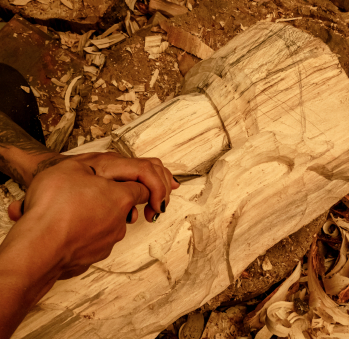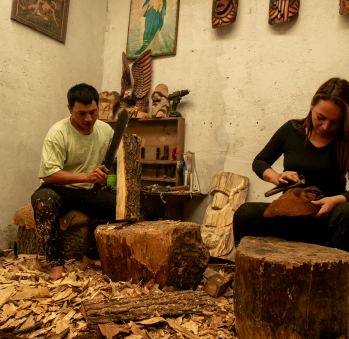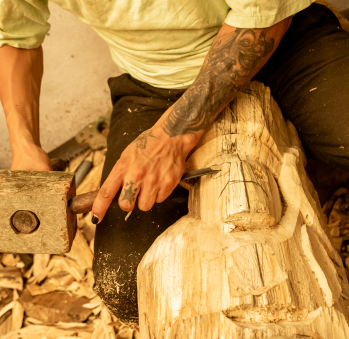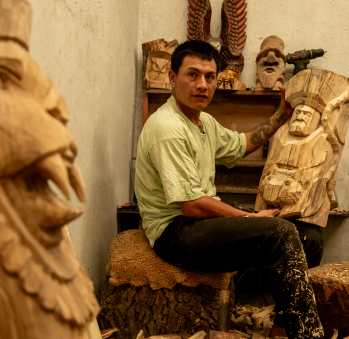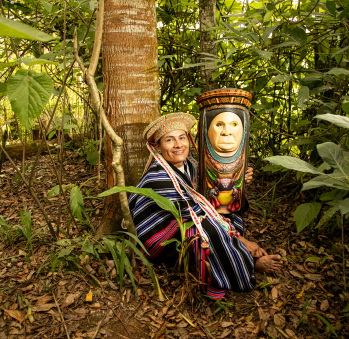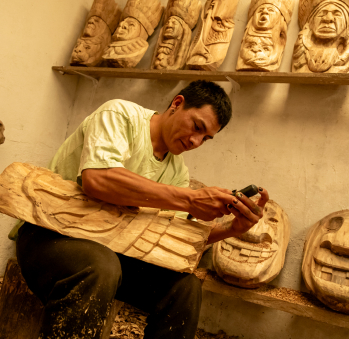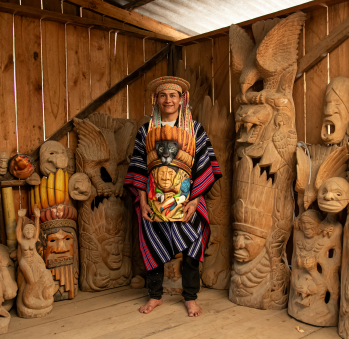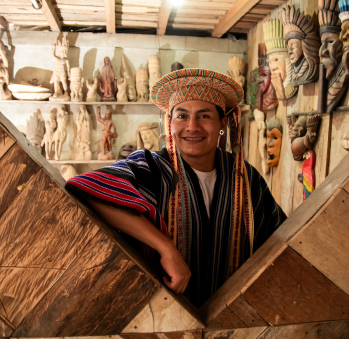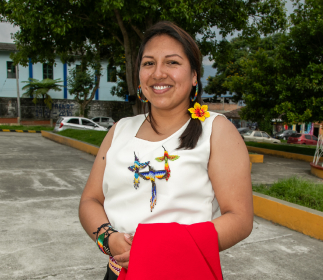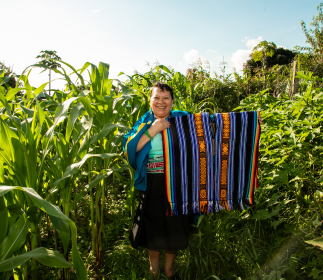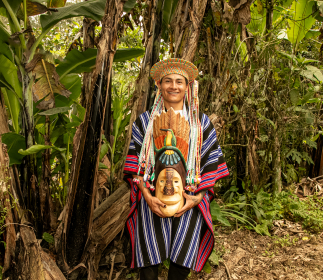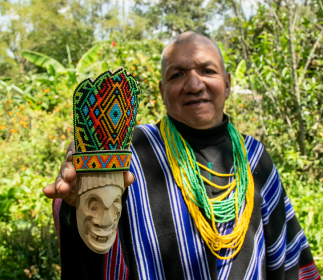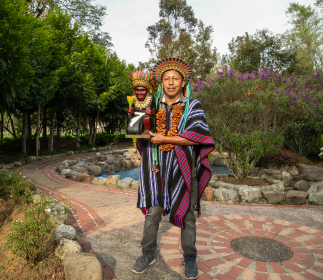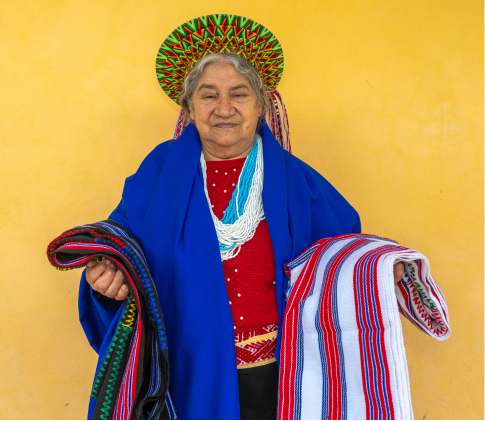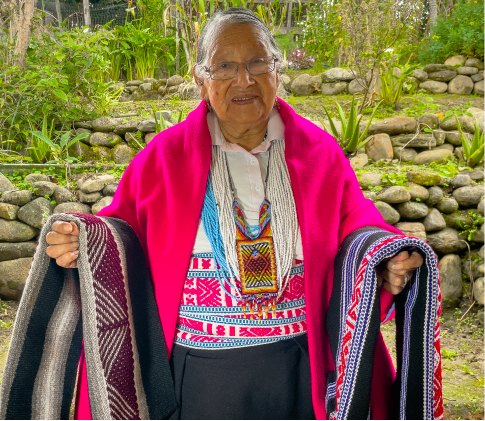Fernando Ortega
Workshop: Inspiración ancestral
Craft: Trabajos en madera
Trail: Putumayo Route
Location: Sibundoy, Putumayo
Fernando Ortega was destined to be a carver, that’s how life had it planned for him. Despite his father’s attempts to keep him away from the workshop, fearing he might cut himself with the knives and machetes, Fernando’s curiosity was too great. With excitement and no awareness of the risk, he grabbed everything he saw. Of course, he cut himself and damaged Don Delio’s pieces convinced he was helping. After hospital visits and scoldings, his father became aware that the boy wanted to be a carver. At the age of 12, he equipped him with tools to finally begin a career that has led him to start his thirties as one of the most skilled craftsmen of the new generation of carvers in the Sibundoy Valley.
When he talks about his work, he does so with passion and knowledge, gained over the years from touching the many willow trees he has encountered in his life. He learned to perfectly make the traditional round masks of his Kamentsá people and enjoys talking about the matachines, san juanes, and saraguayes, iconic characters of his community celebrated during the Great Day in early February each year. He explains that the matachines guide the community to celebrate the start of the new year; they go around with bells, ringing them to call everyone. They wear red masks symbolizing indigenous blood. Then there are the san juanes, representing John the Baptist, whose head was cut and placed on a silver platter. In the Kamentsá tradition, he is represented with a long tongue to remind how indigenous people stuck out their tongues at the Spanish conquerors after realizing they had been deceived by them with mirrors. Finally, Fernando reminds us that the saraguayes are those who alert us to deceit. Wearing them, therefore, carries deep meaning.
Although he masters their creation, experience has taught him that what he enjoys most is making sculptures. Pieces where he has managed to capture the visions he experiences during ayahuasca ceremonies. He takes a big piece of willow and represents the animal kingdom, decorating it with images from these journeys. Depending on the with which he recieves “the medicine,” as ayahuasca is known, eagles, tigers and jaguars, macaws, hummingbirds, and owls have appeared to him. Each one symbolizes a power with which Fernando identifies himself: the spirit of people embodied by eagles, feline strength, the loyalty of the macaw, and the good news of the hummingbird, the messenger birds of the Kamentsá world. Even the bear is there, which founds the traditional myth of the bear man, son of the abduction of one of these animals who fell in love with an indigenous woman.
He likes to create visionary figures, taitas and wise women surrounded by vines, plants, and roots that allow connection with the spirit. Also, protective figures who might be accompanied by a snake to ward off evil tongues and energies.
Everything he carves has a meaning and an intention. He wants those who contemplate his pieces to discover the beauty and richness of his beliefs, all laden with deep meanings with which he wants us to identify. He knows that to know something is to value it and allow it, consequently, to survive. Perhaps that’s why, even though he works alone, he is training his partner, Alexandra, to become the second female carver in Sibundoy. He understands the transmission of knowledge and the love it entails to tell our stories.
Craft

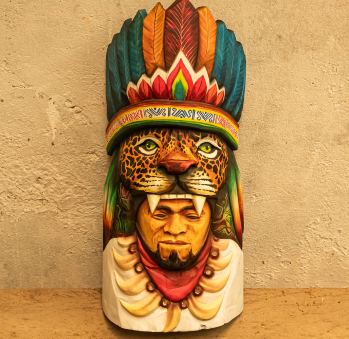
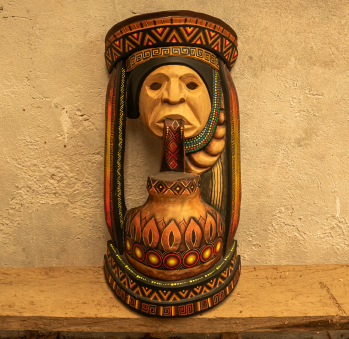
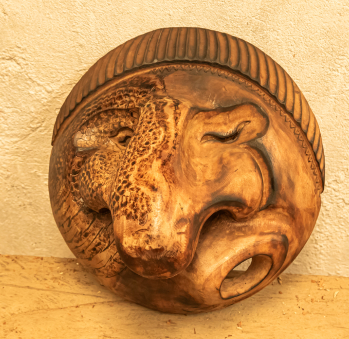
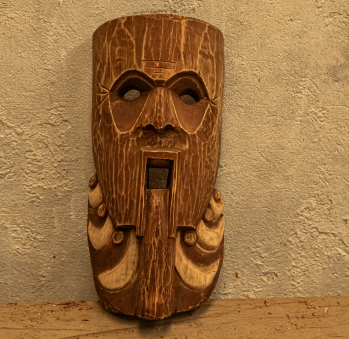

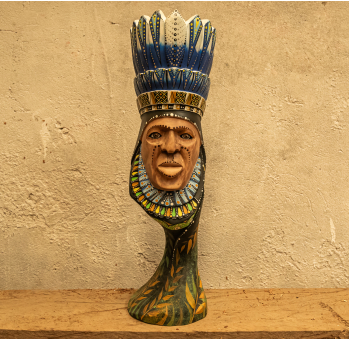









Artisans along the way
Artisans along the way
No puede copiar contenido de esta página








































